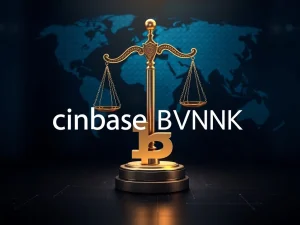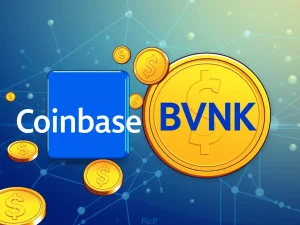Critical Debate: Is Open Source Crypto Facing Extinction?

Crypto’s roots are firmly planted in an open-source ethos. This foundational principle means code is public, accessible, and built with community input. Transparency and verifiability aren’t just buzzwords; they are the pillars supporting trust in systems like Bitcoin. However, as the crypto space matures, the benefits of open source crypto are being weighed against some significant challenges.
The Shift Towards Closed Source Crypto
One major disadvantage of open source is the ease with which successful projects can be forked. Innovative platforms, especially in Decentralized Finance (DeFi), have seen direct competitors emerge simply by copying their public code. This led some projects to consider or adopt closed-source development. The idea is to protect unique designs, maintain a competitive edge, and potentially reduce the risk of exploits by making the code harder for malicious actors to analyze quickly.
However, this approach is often criticized. Critics argue that hiding potential flaws rather than addressing them publicly amounts to ‘security through obscurity.’ Closed-source systems seem to contradict crypto’s original vision of decentralization and transparency, a movement born from cypherpunks and hackers now increasingly integrating with traditional systems.
Does Closed Source Improve Crypto Security?
The question of whether closed source truly enhances crypto security is hotly debated. A recent incident on Solana’s Loopscale protocol provides a relevant case study. This closed-source DeFi lending platform suffered a $5.8 million exploit just weeks after launch. A hacker manipulated parameters to take out undercollateralized loans.
While the funds were eventually returned, the incident highlighted concerns about the prevalence of closed-source projects, particularly on Solana. An engineer at Solana research firm Anza, known as ‘Jordan,’ identified closed-source DeFi protocols and wallets as a major weakness, arguing they force users to trust teams blindly rather than verifiable smart contracts.
Examining Solana DeFi Trends
Interestingly, data from DefiLlama shows a notable shift within the Solana DeFi ecosystem. In its early days, closed-source protocols held significant dominance. By late 2021, open-source alternatives began sharing the stage. As of April 2024, open-source protocols account for nearly 90% of the total value locked in Solana’s DeFi space. This suggests a growing user and developer preference for transparency and community-vetted code within the Solana ecosystem.
Experts like Max Kaplan, founder of Sol Strategies, advocate for open source: “Audited, open-source code is the best way forward… By being open source, getting audited and having a bounty program, protocols can get more eyes on their code while also incentivizing everyone to do the right thing.”
Open Source vs. Closed Source: A Broader Perspective
This debate isn’t unique to crypto. The release of powerful, low-cost open-source AI models like China’s DeepSeek in early 2025 sparked a similar discussion. While showcasing open-source innovation’s power, it also raised concerns about safety guardrails. Experts noted that open-source AI can be easily modified or ‘jailbroken’ to produce harmful content or tools, potentially making it more susceptible to abuse than controlled, closed models.
However, proponents of open source in crypto argue that the comparison isn’t perfect. Mikko Ohtamaa, founder of Trading Strategies, points out that even if most users don’t read code, it only takes one knowledgeable person to find and expose vulnerabilities or bad practices. He also notes that projects can protect intellectual property through licensing models, citing Uniswap v3’s business license as an example.
Research supports the security argument for open source. A 2022 Red Hat report found that most IT leaders consider enterprise open-source software as secure or more secure than proprietary alternatives. Ohtamaa emphasizes: “Transparency is the fundamental property of cryptography and blockchain systems. Without transparency, there is no verify. With no verify, any low trust system like a blockchain is no better than a centralised system.”
Why This Matters for the Future of Crypto
While some builders may feel frustrated by having their work copied, the move towards closed source in crypto is a complex issue. It reflects the industry’s growing maturity and its increasing integration with traditional finance, where closed code is standard. However, critics worry that sacrificing transparency for perceived advantages or easier integration risks eroding the core principles that gave crypto its initial revolutionary potential.
The debate between open source crypto and closed source crypto is far from settled. While practical considerations like competitive advantage and integration drive some projects towards closed models, the fundamental arguments for transparency, community review, and verifiable code remain powerful, especially when considering crypto security and trust. The trend on platforms like Solana DeFi suggests that, despite the challenges, many in the community still see open source as the path that best aligns with crypto’s original vision.
Ultimately, the choice between open and closed source impacts not just individual project success but the very nature of the decentralized ecosystem. As crypto continues to evolve, how it navigates this debate will be crucial in determining whether it retains its soul or becomes just another part of the system it once aimed to disrupt.







